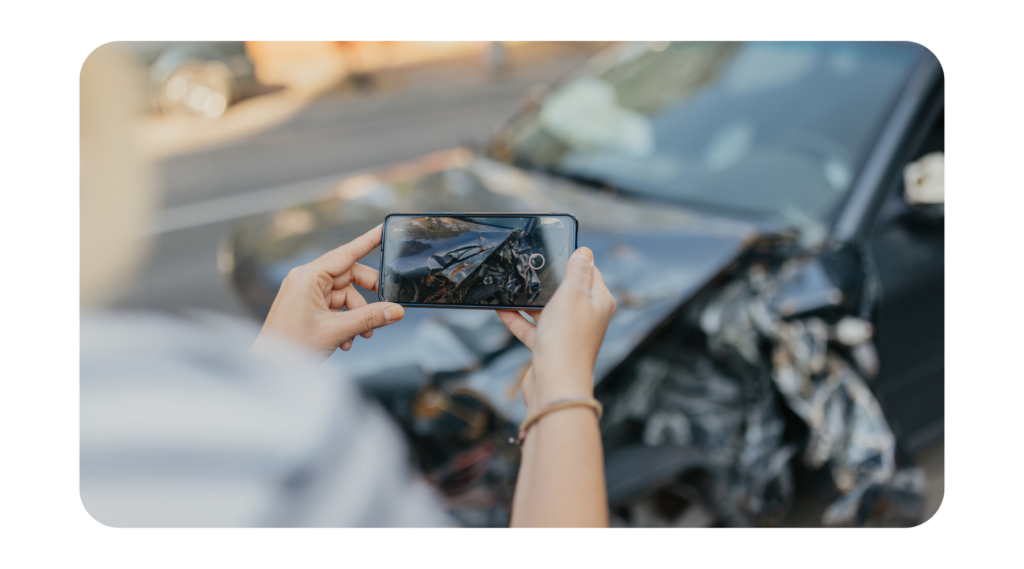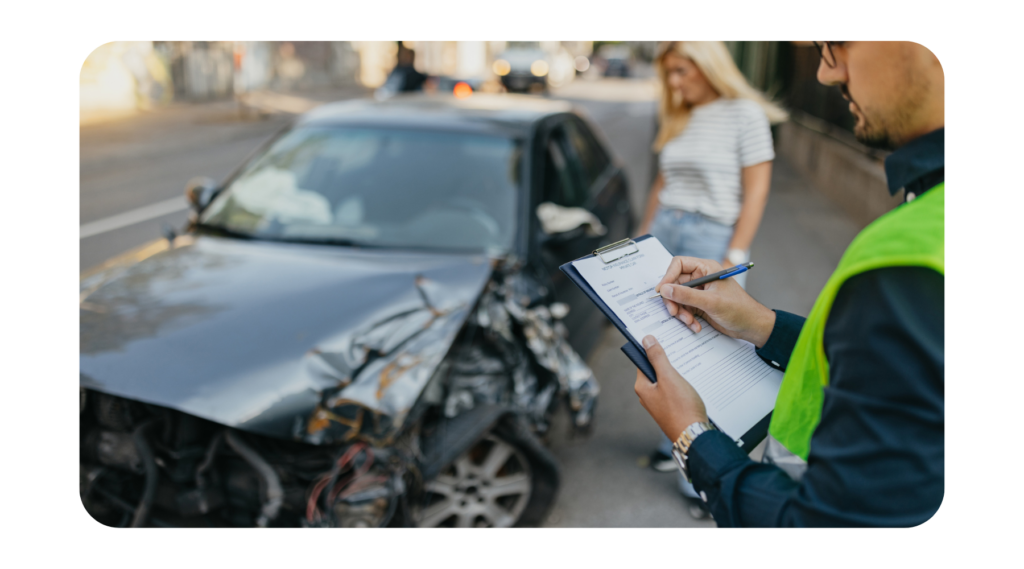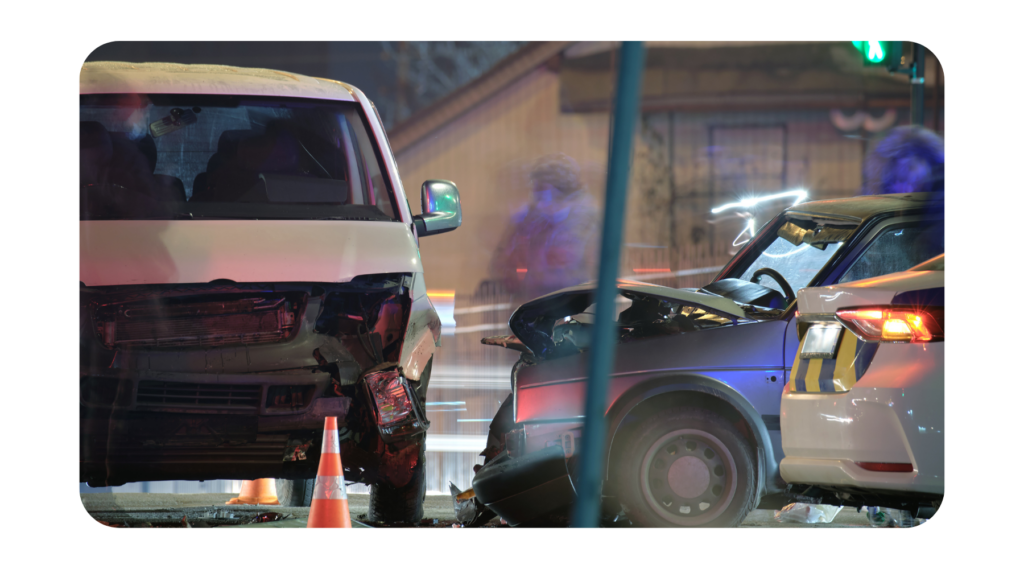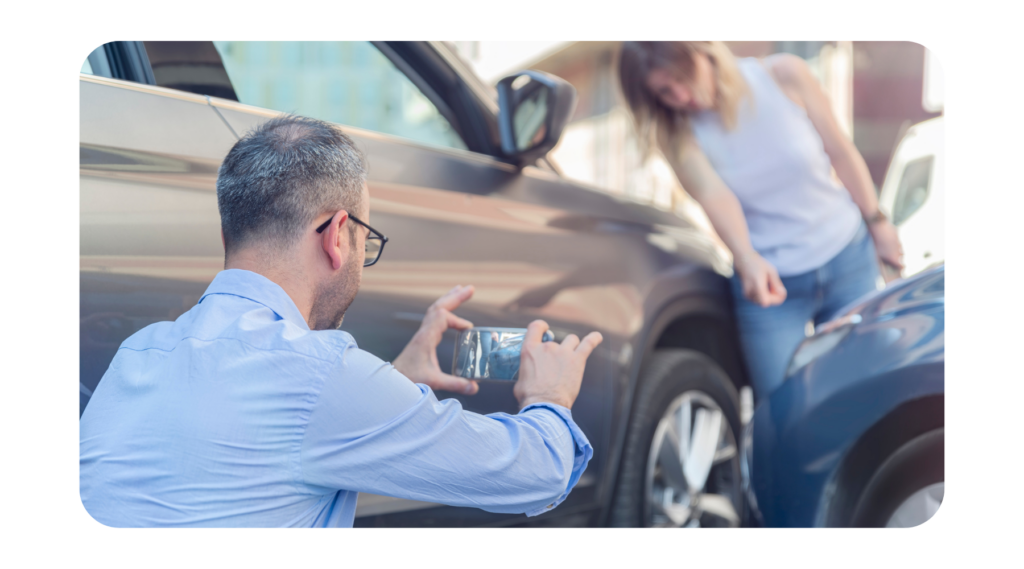How is Fault Determined in a Car Crash in California?

According to the most recent report from the California Highway Patrol, 143,476 crashes led to injury and 3,672 fatal crashes in 2020 alone. LMS Law works with victims of all types of car crashes. The most common types are rear-end collisions, side-swipe crashes, T-bone collisions, single-vehicle, head-ons, rollovers, and hit-and-run crashes.
Car crashes happen for dozens of reasons, but many common causes are speeding, driving under the influence, not following traffic laws or being unaware of the driving environment, inattentive driving, car manufacturer faults, and poor road conditions. These crashes can lead to everything from minor to severe injuries to even the death of the driver(s), passengers, or others caught in the incident.
If you have been in a car crash in California, several complex laws will impact your ability to receive compensation. Working with our auto crash attorneys in the Bay Area can help you maneuver the legal process to your advantage and receive compensation for any harm you’ve suffered.

Statute of Limitations in California for Filing an Auto Crash Claim
 In California, auto crash victims have up to two years from the date of their collision to file claims with the civil courts for their injuries, while they have up to three years from the date of the crash to file claims for property damage. If, however, the date of discovery – the point in time at which the loss or damage from the incident was discovered – is after the collision, victims may use this date instead. Additionally, if you are filing a claim against a government agency, you must file within six months of the crash.
In California, auto crash victims have up to two years from the date of their collision to file claims with the civil courts for their injuries, while they have up to three years from the date of the crash to file claims for property damage. If, however, the date of discovery – the point in time at which the loss or damage from the incident was discovered – is after the collision, victims may use this date instead. Additionally, if you are filing a claim against a government agency, you must file within six months of the crash.
California is an At-Fault State and Types of Fault in Car Crashes
California is an at-fault state, a designation used for insurance claims. If a driver is found to be at fault for a collision, they are responsible for compensating the other parties for their losses. Typically, these losses are paid through the driver’s insurance company, which plays a significant role in determining fault and liability in a crash.
There are several types of faults in California that will be considered:
- Negligence: Refers to a driver’s neglect in exercising reasonable care while driving. A motorist who gets into a crash while texting and driving would be considered negligent.
- Recklessness: A driver would be reckless if they deliberately disregarded the safety of other drivers or vehicles on the road, like driving well over the speed limit.
- Intentional misconduct: A deliberate act like running a red light that leads to a crash is intentional misconduct.
Even if you were partially responsible for the crash, California’s rules of comparative negligence still enable you to recover damages, but your award will be proportional to the percentage of your fault in the crash.
Liability in California Car Crashes
 Liability determines which driver(s) have legal responsibility for the crash and rules who is financially responsible for any injuries or damages incurred from the crash. The party at fault is usually held liable for these damages and injuries.
Liability determines which driver(s) have legal responsibility for the crash and rules who is financially responsible for any injuries or damages incurred from the crash. The party at fault is usually held liable for these damages and injuries.
The different forms of liability in California are:
- Negligence liability applies when drivers fail to show other drivers a duty of care. In order to prove another driver’s negligence, you must prove the other driver owed you a duty of care, that they neglected that duty, and that their lack of care resulted in the crash and your damages and/or injuries.
- Vicarious liability is when someone is responsible for the actions of another person, such as an employer’s responsibility for an employee’s car crash while driving a company vehicle.
- Product liability refers to a defective product, such as a faulty car part, causing a car crash. The product’s manufacturer or distributor may be held liable in these cases.
- Intentional tort liability occurs when another driver intentionally causes harm to another driver, such as one motorist purposefully ramming their car into another in a fit of road rage.
- Strict liability refers to situations when drivers are considered automatically at fault regardless of negligence or recklessness.
Working with Insurance When Filing Auto crash Claims in California
All California motor vehicle drivers are required by law to maintain auto insurance, including minimum liability insurance of $15,000 for injury/death to one person, $30,000 for injury/death to more than one person, and $5,000 for damage to property. These limits are among the lowest in the country and are due to increase in 2025. The increase in limits resulted from grassroots efforts in which LMS attorneys were involved.
If you were injured in a car crash, you must file a claim with the other party’s auto insurance company. You may be able to receive compensation for medical bills, property damage, lost wages, and non-economic damages, like any relevant physical pain, emotional suffering, mental anguish, and lost quality of life. In California, there is no damage cap for auto crashes. Punitive damages may be applicable in rare cases when a defendant exhibited gross or reckless negligence.
Insurance companies will work with police and the involved drivers to gather evidence and determine fault. Most auto crash claims are settled outside of court, but a case can go to trial if the insurance company does not offer a fair amount to compensate for the damages or the parties cannot agree on who was at fault.
You may encounter another driver who has minimal insurance that will not meet your compensation needs. At this point, it may be best to file a claim with your own insurance company under your policy’s uninsured/underinsured motorist coverage. In specific situations, victims may benefit by filing a lawsuit instead of an insurance claim. LMS Law’s auto crash lawyers will provide guidance on which route is best for you based on the details of your crash. LMS law encourages everyone to speak with their auto insurer to ensure they have adequate UIM (uninsured motorist) coverage.
How to Prepare for Your Auto Crash Claim
 To get the best results working with auto crash attorneys, we recommend you gather the following details and evidence to support your claim:
To get the best results working with auto crash attorneys, we recommend you gather the following details and evidence to support your claim:
- Photos of the scene of the crash
- Photos of your injury
- Photos/videos of the crash itself
- Pictures of the vehicle damages
- Any on-scene report made by the police or other officials regarding the crash/injury
- Any medical reports, including doctor’s notes regarding the extent of the injury and subsequent prescriptions prescribed
- Any medical bills, including receipts for paid prescriptions, whether paid by insurance, Medical, Medicare, or bills that remain unpaid
- Copies of paychecks or another form of salary verification before the crash for proof of lost earnings
- Any correspondence between you and your insurance company regarding your claim
- Any correspondence between you and the other driver’s insurance company regarding your claim
Our auto crash lawyers will fight on your behalf to get the compensation you deserve. We provide free case reviews to help you fight your battles so you can focus on healing. Call us today at (415) 400–7000 or reach out online to arrange this free consultation. If you are unable to come to us, we will meet you at your home or in the hospital.
*The above is not meant to be legal advice, and every case is different. Feel free to reach out to us at LMS Law if you have any questions. Information contained in this content and website should not be relied on as legal advice. You should consult an attorney for advice on your specific situation.
Visiting this site or relying on information gleaned from the site does not create an attorney-client relationship. The content on this website is the property of LMS Law and may not be used without the written consent thereof.







